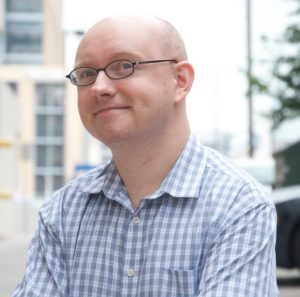The world of higher education has a greatly expanded vocabulary in the Covid-19 era. Terms like “contact tracing” and “remote learning” are part of life for administrators and instructors now that classes have resumed across the country, with a broad mix of in-person and online courses that have been adapted quickly since the onset of the Covid pandemic.
Adapting to the demands of higher education in the current climate has been a challenge, and the participants in a recent Vyopta webinar looked at some of the ways they’ve responded to the shift toward distance learning.
Clear themes emerged over the course of the roughly hour-long talk. Among them: distance learning at scale is very much a work in progress; issues such as access to high-speed Internet remain a problem across the country; and there is a need for innovation in platforms that can elegantly present instructional material at all levels.
And the panelists agreed that remote course content needs to be delivered free of static, stutter and other quality issues, for fear of creating disillusionment in students who may already be experiencing issues from a prolonged quarantine and social distancing.
“When you’re in the classroom, you have to have a rock-solid solution. It can’t be spotty,” said Brian Gunnell, transformative technology strategist for at UVA Health’s Karen S. Rheuban Center for Telehealth. “If your audio’s cutting out on your videos, it becomes very distracting and you’re not getting that level of interaction. You need to really deliver the service. So you don’t always need video, but when you do, you need it to be good.”

Managing Access Matters
Classes previously held in large lecture halls have been the most likely to be moved to an online format because of the risk of mass gatherings turning into “super spreader” events for infection. Smaller classes with 20 or less participants, however, can endure with proper social distancing.
Lance Ford, an educational advocate and teacher trainer for Cisco, said the spectrum of educational options in late 2020 ranges from entirely on site for small courses, entirely virtual class content, a hybrid model with some on-site sessions mixed with asynchronous content, and streaming live classes at set times.
Ford said one of the most persistent challenges educators face is reliable access for students to high-speed Internet. Remedying that problem takes innovative thinking from colleges and universities and participation from partners like Cisco willing to commit resources whenever possible.
“In my district, 30 percent of the kids do not have any Internet access to the house. None zip,” he said. “We are working with the state of Oklahoma to provide some hotspots. We’re working with our local service provider to actually provide a tower… but there is still a huge disparity in the last mile of connectivity. And so we’re doing everything we can to get those folks on board.”

Quality Concerns Multiply
The response to the pandemic in the spring made educators move quickly while in most cases students were away on break. At the University of North Texas, Adam Fein had to work to move roughly 7,700 courses online in the space of one week. As UNT’s vice president for digital strategy and innovation, he said the school has gone from only 12 percent of its students using at least some online course consumption in normal circumstances to 95 percent of its students fitting that description currently.
That shift has caused a seismic change in the school’s use of online meeting platforms. Fein said in April UNT went from around 10,000 Zoom connections to more than 500,000. That increase has brought with it the need for robust monitoring and analytics capabilities so his team can ensure the quality of course delivery and address any recurring problems quickly.
“We’ve got analytics tracking on most of our primary tools like Canvas and Zoom and our other databases where we’re looking at that all the time,” he said. “We get a pretty good idea of what the pain points are pretty quickly and if something’s not right or needs to be updated. We’re fortunate to have had a pretty good foundation baseline prior to Covid with quite a few online options and online programs…if you think about 4,000 or 5,000 students studying fully online, that’s different than all 40,000 students.”

To hear more from UVA, UNT, University of Arizona, and Cisco, watch the on-demand webinar.
Chad Swiatecki is a business writer and journalist whose work has appeared in Rolling Stone, Billboard, New York Daily News, Austin Business Journal, Austin American-Statesman and many other print and online publications. He lives in Austin, Texas and is a graduate of Michigan State University. Find him online on LinkedIn.








